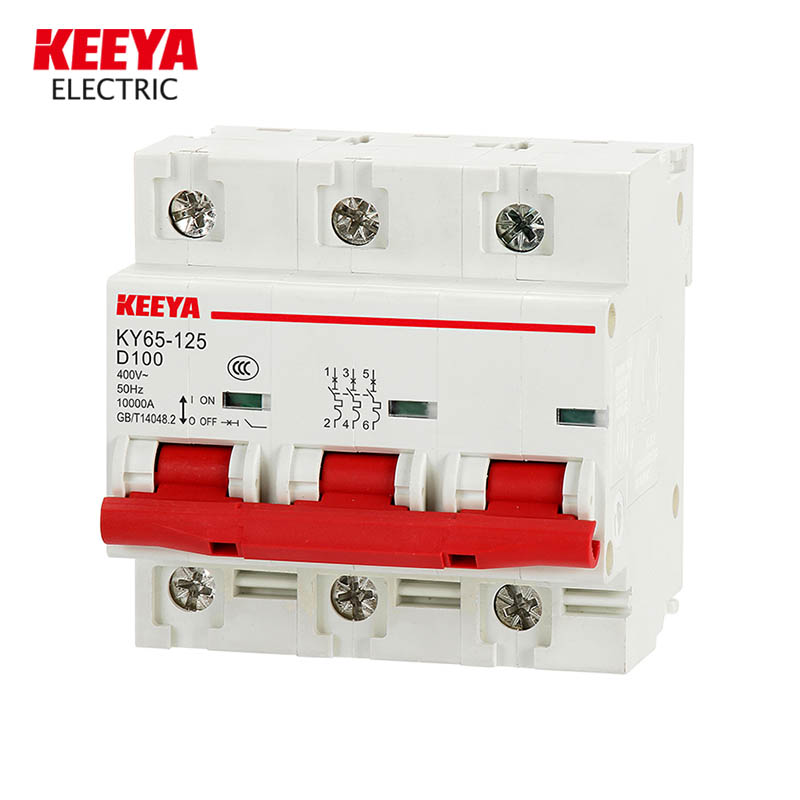Key Components of a Circuit Breaker
2024-06-05
Circuit breakers are essential components in electrical systems designed to protect circuits from damage caused by overloads or short circuits. They function by automatically interrupting the flow of electricity when a fault is detected, preventing potential hazards like fires and equipment damage. Here's an in-depth look at circuit breakers, including their types, components, operation, applications, and maintenance considerations.
Key Components of a Circuit Breaker
1. Frame: The structural body that houses all the internal components.
2. Operating Mechanism: The mechanism that opens and closes the contacts, often operated manually or automatically.
3. Contacts: Conductive elements that open (break) or close (make) the circuit.
4. Arc Extinguishing System: A system to extinguish the electric arc that forms when the contacts open.
5. Trip Unit: The sensing device that detects abnormal conditions (like overcurrent) and triggers the operating mechanism to open the contacts.
6. Terminal Connections: Points where the circuit breaker connects to the electrical circuit.
Types of Circuit Breakers
1. Based on Voltage Level:
- Low Voltage Circuit Breakers (LVCB): Used in residential, commercial, and light industrial applications.
- Medium Voltage Circuit Breakers (MVCB): Used in industrial applications and distribution networks.
- High Voltage Circuit Breakers (HVCB): Used in power transmission and large industrial applications.
2. Based on Installation Method:
- Fixed Type: Permanently installed in the panel.
- Draw-Out Type: Can be easily removed for maintenance and replacement.
3. Based on Operation Mechanism:
- Manual Circuit Breakers: Operated by hand.
- Automatic Circuit Breakers: Operate automatically when a fault is detected.
4. Based on Trip Unit:
- Thermal Magnetic Circuit Breakers: Use both thermal and magnetic elements to detect overloads and short circuits.
- Electronic Circuit Breakers: Use electronic sensing devices for more precise protection and control.
- Hydraulic Magnetic Circuit Breakers: Use a hydraulic mechanism to delay tripping, suitable for environments with high inrush currents.
5. Special Types:
- Ground Fault Circuit Interrupters (GFCI): Protect against ground faults by interrupting the circuit when an imbalance between the live and neutral conductors is detected.
- Arc Fault Circuit Interrupters (AFCI): Detect and interrupt arc faults to prevent electrical fires.
Operation of a Circuit Breaker
1. Normal Operation: The circuit breaker allows current to flow through its contacts, completing the electrical circuit.
2. Fault Detection: When an overload or short circuit occurs, the trip unit detects the abnormal condition.
3. Tripping Mechanism: The trip unit activates the operating mechanism, opening the contacts and interrupting the current flow.
4. Arc Extinguishing: The arc extinguishing system (often using air, oil, vacuum, or SF6 gas) extinguishes the arc formed when the contacts open.
5. Resetting: After resolving the fault, the circuit breaker can be manually or automatically reset to restore the circuit.
Applications of Circuit Breakers
- Residential: Protect household electrical circuits from overloads and short circuits.
- Commercial: Ensure the safety of electrical systems in offices, shops, and public buildings.
- Industrial: Protect heavy machinery, manufacturing processes, and distribution networks.
- Utility: Used in power generation, transmission, and distribution networks to protect infrastructure and maintain system reliability.
Maintenance and Best Practices
1. Regular Inspection: Periodically check for signs of wear, damage, or overheating.
2. Testing: Perform routine operational tests to ensure proper functioning.
3. Cleaning: Keep the circuit breaker and its surroundings clean to prevent dust and debris buildup.
4. Lubrication: Lubricate moving parts as recommended by the manufacturer.
5. Replacement: Replace any damaged or worn components promptly to maintain reliability.
6. Upgrading: Consider upgrading older circuit breakers to newer models with advanced protection features.
Common Challenges and Solutions
- Nuisance Tripping: Ensure proper calibration and correct sizing of the circuit breaker for the specific application.
- Aging and Wear: Regularly inspect and maintain to extend the life of the circuit breaker.
- Arc Faults: Use AFCI breakers in areas prone to arc faults, such as bedrooms and living areas.
Conclusion
Circuit breakers are vital for the safe operation of electrical systems, offering protection against overloads, short circuits, and other electrical faults. By understanding their types, components, operation, and maintenance, you can ensure reliable and safe electrical installations in various applications.



